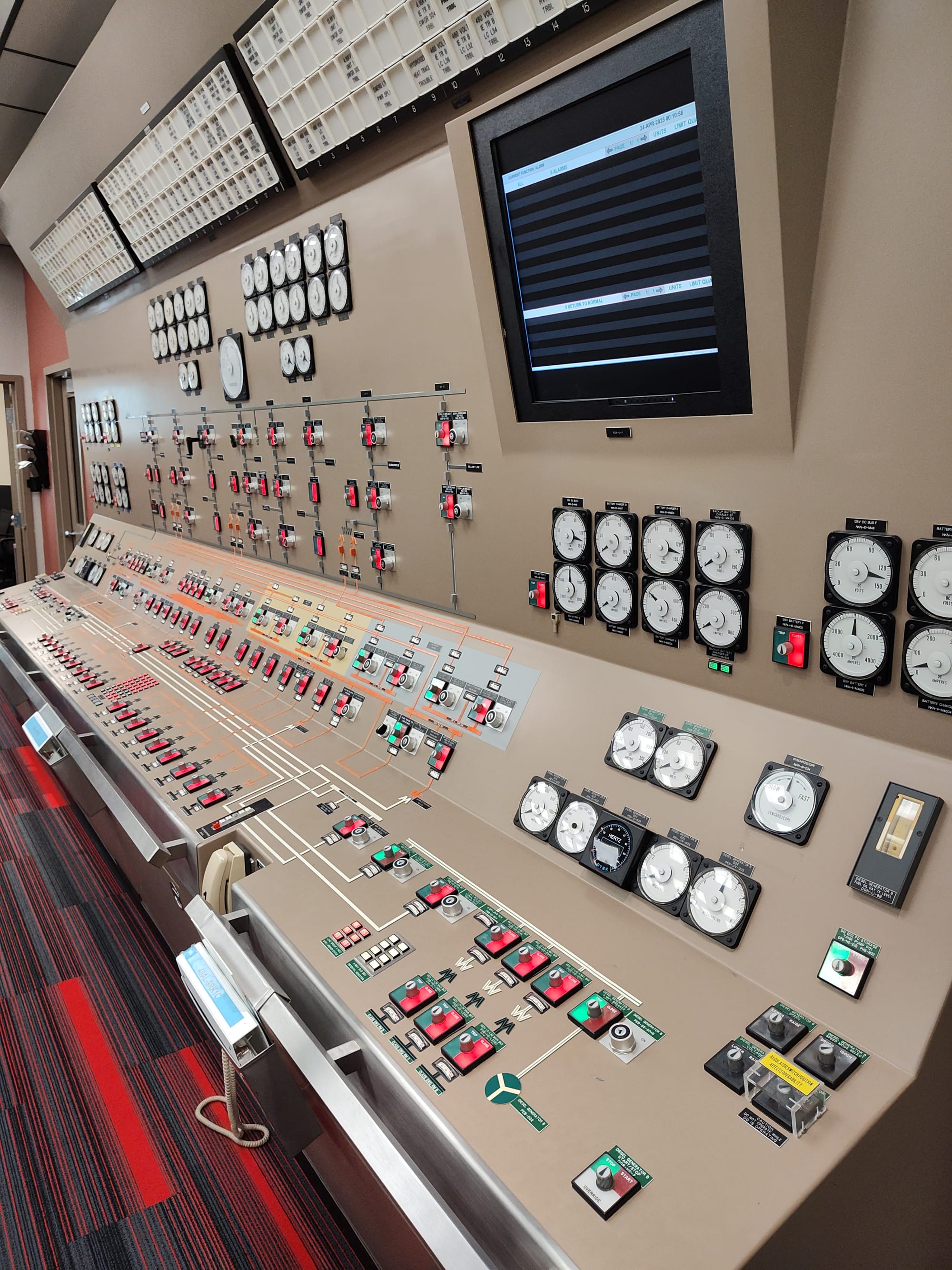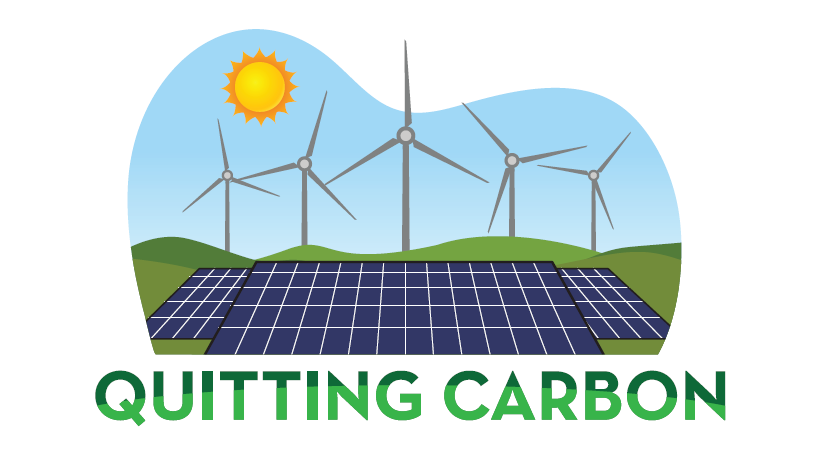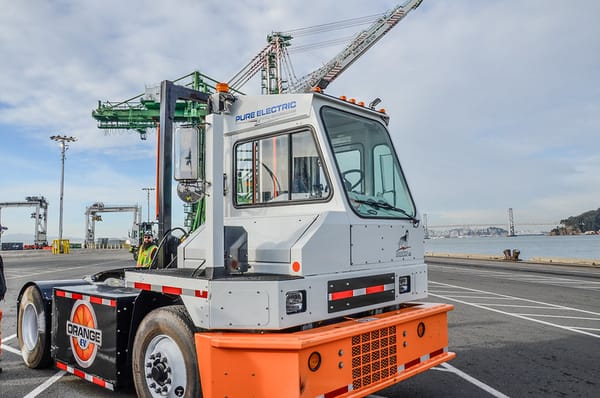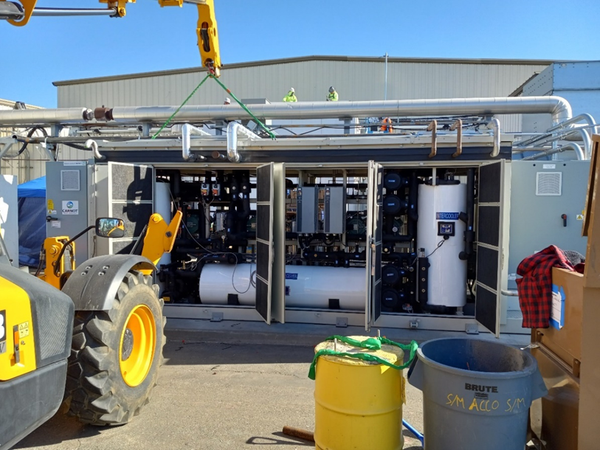What I’m reading: Trump's guarantee for fossil fuel projects, UK solar home mandate, world's largest electric ferry, and more

Quitting Carbon is a 100% subscriber-funded publication. To support my work, please consider becoming a paid subscriber or making a one-time donation.
In my last roundup, I mentioned I was heading to the Society of Environmental Journalists (SEJ) annual conference in Tempe, Arizona. I have a short dispatch from the conference at the end of this newsletter. Look for more from the conference in the coming weeks. Until then, here is another roundup of highlights from what I've been reading.
Trump administration floats paying oil, gas, and mining companies if the federal government halts projects
The Trump administration seems determined that the oil and gas industry players who backed Donald Trump’s re-election see a return on their investment.
On Wednesday, the administration’s energy czar, Interior Secretary Doug Burgum, said “the White House’s National Energy Dominance Council [NEDC] is mulling a plan to force the U.S. government to pay a penalty to energy companies if a president cancels fossil fuel or mining projects,” reported Greenwire’s Heather Richards.
The likely inspiration for Burgum’s proposal was the demise of the Keystone XL pipeline. President Joe Biden revoked a key permit for the pipeline on his first day in office. The pipeline developer canceled the project six months later in June 2021.
"Future administrations should not be able to say, 'No, with the stroke of a pen we're going to kill this pipeline project,' even though that company has $3 billion in the ground,” Burgum said at the Hill and Valley Forum in Washington, D.C. "We're working on a plan at NEDC where we've got to have sovereign risk insurance – not against a foreign country but against our own.”
Burgum continued: “If you put capital into a project that's related to fossil fuels or a project related to critical minerals and mining … if somebody comes along in the future administration with an executive order, if they want to wipe out what you've invested in, they've got [to] write you a check to pay you for your lost capital.”
You might recall it was Burgum who just two weeks ago issued a stop-work order to do just what he described above – not for an oil or gas project – but for the $4.5 billion Empire Wind project off the coast of New York. I covered Empire Wind’s now uncertain status in my last roundup.
The project had started at-sea construction only weeks before Burgum’s order. Now, no surprise, Equinor, the Norwegian energy giant that is building Empire Wind, is threatening legal action to save the project.
“Anders Opedal, Equinor’s chief executive, called the stop order ‘unprecedented’ and ‘extraordinary’, adding that the Norwegian state-controlled company considered it ‘unlawful’. Equinor is seeking a meeting with the administration of US President Donald Trump after Norway’s finance minister Jens Stoltenberg raised the issue in Washington this month. But Opedal added: ‘We’re also considering legal options,’” the FT’s Malcolm Moore and Richard Milne reported on Tuesday.
The Trump administration clearly isn’t bothered by a multi-billion-dollar energy project being killed by the federal government – as long as the project is not from one of its favored industries.
Solar panels to be mandatory for new homes in England
The UK’s Labour government will soon release rules requiring nearly all new homes to install solar panels.
“Almost all new homes built in England would need to be fitted with solar panels as standard from 2027, under rules being drawn up by the government that would slash household energy bills by around £1,000 a year, according to reports,” BusinessGreen’s Michael Holder reported on Thursday.
A similar measure took effect in California in 2020.
“The rules are set to form part of the Future Homes Standard, which is expected to set out requirements for housebuilders that would cut carbon emissions from all new homes by 75 to 85 per cent compared to current regulations,” writes Holder.
“In addition to requiring the installation of solar panels the standard is expected to effectively ban the installation of fossil gas boilers in new homes, providing a major boost to the heat pump and district heating markets.”
The rules are expected to add just under £4,000 ($5,324) to the cost of a new detached house. But homeowners would be able to recoup these additional costs within four years, according to an estimate from the MCS Foundation.
World’s largest all-electric ferry launches in Australia
Ferries are ideally suited for electrification. The ships ply relatively short, fixed routes and the turnaround time between crossings provides time for charging.
I reported in a roundup last December that San Francisco Bay Area ferry operators had been awarded $55 million under the U.S. Environmental Protection Agency’s Clean Ports Program to establish “the first zero-emissions fast ferry network in the country.”
Now, a Tasmanian shipbuilder has announced the launch of the largest all-electric ferry built to date.
“The world’s largest 100 per cent battery electric ship has been officially launched at a shipyard in Hobart and is almost ready for service in South American waters, where it will ferry up to 2,100 passengers and 225 vehicles between Argentina and Uruguay,” The Driven’s Sophie Vorrath reported today (emphasis in original).
She added: “The vessel, originally intended to be fuelled by gas, will be equipped with over 250 tonnes of batteries and with an energy storage capacity of more than 40 megawatt-hours – four times larger than any previous maritime installation in the world.”
“At 130 metres in length, Incat [the Tasmanian ship builder] claims the Hull 096 is not only the largest electric ship in the world, but also the largest electric vehicle of its kind ever built – and one of the most significant single export items in Australia’s manufacturing history,” writes Vorrath.
Climate and clean energy on the ballot in Australia
By the time you read this, we may know the outcome of Saturday’s national election in Australia.
As in Canada, where Mark Carney’s Liberals just won another term in office, the center-left incumbent party is attempting to hold off a challenge from an opposition led by a Trump-like figure.
In an election preview published today, Giles Parkinson, founder and editor of Renew Economy (your best source of news and analysis on Australia’s clean energy sector), argues that Prime Minister Anthony Albanese’s Labor Party has earned the right to continue leading the country’s energy transition, while Peter Dutton’s hard-right Coalition should be kept out of power at all costs.
“On the issues of climate and energy, and many other issues such as environment, the federal Coalition is not fit to govern, because they have no respect for the science, economics or engineering, or the impact on future generations. The current team shouldn’t be allowed anywhere near ministerial offices,” writes Parkinson.
He adds: “Australia needs at least another three years to sort out, lock in, and accelerate its transition to green energy and to put some steel into its climate policies, which are still well short of what is needed to address the science.”
“A minority Labor government, guided by clear, informed consideration of policy, respecting the science, and seizing the economic opportunities of the green energy transition – rather than backroom politics – is really the only hope for the country, and the generations to come,” concludes Parkinson.
Bonus: What it takes to operate a nuclear reactor
I’ve written about and reported on the energy industry for 20 years. But until last week, I had never visited a nuclear power plant.
On a day-long field tour led by Inside Climate News’ Martha Pskowski, me and about 40 other journalists and other SEJ conference attendees visited the Palo Verde Generating Station, which is located about 55 miles west of downtown Phoenix. The plant’s three reactors, which came online in the mid-1980s, together have a capacity of 4,000 megawatts.
The tour left a lasting impression – and I’ll write more about it later – but to start, I wanted to share just one of the day’s takeaways that stuck with me: what it takes to operate a nuclear reactor.
Nuclear reactor control room operator is one of the most demanding jobs we ask any public servant to perform. And the rigorous training required for the job befits the role’s life-and-death responsibilities.

In a simulator that is an exact replica of each of Palo Verde’s three reactor control rooms, the plant’s lead trainer told my group it takes 18 months of training before a prospective control room operator can be certified to work in a live reactor. And even after the operator has been certified by the Nuclear Regulatory Commission (NRC), operators return to the simulator for a week of training every five weeks.
The training requires a substantial investment. On the bus heading back towards Phoenix, a Palo Verde spokesperson told me it costs Arizona Public Service, the large investor-owned electric utility that runs the plant, $2 million to train each operator to achieve his or her NRC certification.
With so much invested in each operator, the plant doesn’t take any chances when it comes to issues that may compromise the operator’s ability to perform his or her duties. If you get a speeding ticket off duty, the plant will know about it, the lead trainer told us. Likewise, if you are taking a prescription medication, the plant will ask you about it.
A life in journalism has its drawbacks, to be sure. There is the ever-present threat of layoffs, the low pay, and the crisis of the public’s fleeting attention span. But it has its perks, too.
As a journalist, I’ve climbed to the top of a wind turbine on the Danish island of Samsø, I’ve toured offshore wind farms, autonomous vehicle test tracks, and factories that produce wind turbine blades, solar panels, and electric vehicles. And now, I’ve toured a nuclear power plant, too.




